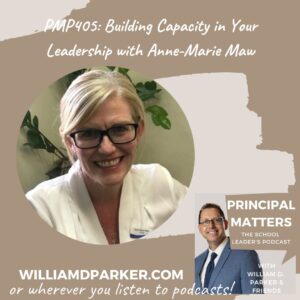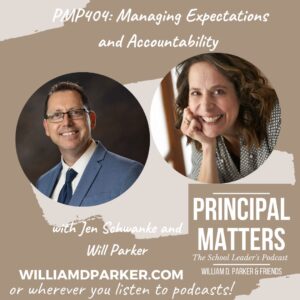Podcast: Play in new window | Download
On Tuesday, September 25, 2018, I walked into a D.C. high school called School Without Walls, a four-story building interspersed with hallways full of art.

I saw hand-built go-carts with bicycle parts lining a floor-way. Sky-lights hovering over walls of exposed brick created a sense of old and new. Expansions to the building allow School Without Wall to serve just over 600 students, grades 9-12. The top floor is home to a library with windows looking across at George Washington University.
School Without Wall boasts the following mission: “[To] provide every student with a rigorous, college preparatory, humanities program that incorporates global and local resources in an experiential and interdisciplinary methodology to teaching and learning.” Every senior is required to submit a senior research project and present his or her findings in order to receive a SWW diploma.”
Over 1,300 students apply to attend each year with 140 accepted to the incoming freshman class. Every student is required to take AP Language and AP Literature, and each graduate earns an Associate Degree through concurrent credits at The George Washington University. With offers from universities all across American, 84% of School Without Walls graduates finish college.
Dr. Ross, the 2018 National Principal of the Year, from Chaplin, South Carolina, had invited me to accompany him there. He graduated from the high school in 1998. Twenty years later, he returned to hug the neck of Ms. Sylvia Isaac, a former teacher and now Associate Principal at the school. We also sat with Principal Richard Trogisch and Assistant Principal Simone Anderson as they shared data and background information with us.
Dr. Ross told me he remembers the school most for its commitment to take learning into the city. Every teacher is required to conduct at least two field trips per quarter with the goal of providing hands-on learning experiences for students in every subject.
Interview with Principal Richard Trogisch

Later, I followed up in a Zoom-chat with Principal Richard Trogisch who has served the school for 13 years. Mr. Trogish has been an educator both internationally as well as in the D.C. area. His philosophy of education was born from the European models he saw committed to the humanities.
In this conversation, he explains what makes his school work. As a National Blue Ribbon school, students are not only introduced to a strenuous application process and rigor academics but also they experience a culture of acceptance, safety, and opportunity from teacher and parent partnerships with them.
In a follow-up Zoom conversation, we talked about the following:
• Embracing and celebrating a community’s culture.
• Providing safe learning environments where teachers love students.
• Placing high standards on academics and rigor.
• Including wraparound programs to support students academically and emotionally.
• Partnering with parents, teachers and students in being proud of their school.
I encourage you to listen in to the audio-version of our conversation for the full conversation.
Let’s Wrap This Up
Later after my visit to School Without Walls, I was having dinner at a restaurant called Bantam King on the north side of the Capitol in Washington, D.C. It’s a small shop that serves Raman dishes and incredible fried chicken. The wall across from me was covered in patterns of cafeteria trays glued to wall in blue, aqua green and yellow rectangle patterns. Hanging through the middle of the room were paper lanterns in colors of red, white, and yellow. The ceiling tiles were made from basket weave, and the wallpaper from faded cutouts of newspaper Japanese cartoons. A constant beat of hip-hop played over the hum of voices and the clink of spoons in soup.
As I looked across the small diner, I felt like I was observing a microcosm of global citizenship right in the middle of the nation’s capital. And I felt this same sentiment when walking through the hallways of The School Without Walls earlier in the day.
But every city, town, parish and community has its own flavor. Whether I am in the small towns of rural Oklahoma, a suburban school near Ft. Walton Beach, Florida, or the urban settings of Washington, D.C., I see commonalities among schools that work. These schools commit to the essentials of culture, academics, emotional-support, and parent/community partnerships.
You may not be able to replicate a ‘School Without Walls’ in your community, but you can replicate the essential qualities that make yours a thriving school that works for your community.
Now It’s Your Turn
How would you rate your school in the following categories?
• We embrace and celebrate their community’s culture.
• We provide safe learning environments where teachers love students.
• We place high standards on academics and rigor.
• We include wraparound programs to support students academically and emotionally.
• We are proud of our teachers and students, and partner with parents and communities.
What’s one step you can take today toward growth in one of these essential areas?
Sign-Up For Free Updates and Ebook
When you enter your email address below, you will automatically receive my newest posts and a free Ebook, 8 Hats: Essential Roles for School Leaders. Let’s keep learning together!
Subscribe for free weekly updates and receive free e-book!
(function($) {window.fnames = new Array(); window.ftypes = new Array();fnames[0]=’EMAIL’;ftypes[0]=’email’;fnames[1]=’FNAME’;ftypes[1]=’text’;fnames[2]=’LNAME’;ftypes[2]=’text’;}(jQuery));var $mcj = jQuery.noConflict(true);
Principal Matters–The Book!

School leaders are very busy, so each of the twenty-four chapters is designed as a quick-read and followed with take-action questions for follow-up or reflection. If you want practical ideas on understanding your purpose, managing school teams, dealing with challenges, and leading with courage, action, motivation, and teamwork, go HERE to pick up a copy for you or your team.
Messaging Matters

Harness the power of messaging to create a culture of acknowledgment, respect, and celebration. Written specially for leaders, this title is divided into three parts, helping readers to maximize their role as chief communicators with students, teachers, and parents and community. Each chapter includes suggestions for using digital tools to enhance messaging and ends with reflection questions and practical next steps.


